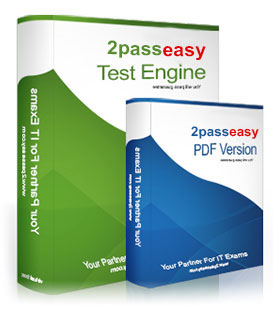300-070 Guide
Key benefits of 300 070 ciptv1
Cause all that matters here is passing the Cisco 300 070 ciptv1 pdf exam. Cause all that you need is a high score of cisco 300 070 Implementing Cisco IP Telephony & Video, Part 1 v1.0 exam. The only one thing you need to do is downloading Pass4sure cisco 300 070 exam study guides now. We will not let you down with our money-back guarantee.
Q61. Which three configuration options are currently unsupported when configuring the Cisco UnifiedBorder Element for videoconferencing? (Choose three)
A. RSVP synchronization of H.323 calls.
B. Multiple logical channels per call leg.
C. H.323-to-SIP video traffic.
D. FECC support.
E. Video endpoints with different H.245 versions.
F. Dual video/picture-in-picture.
G. DSCP marking for video streams.
Answer: C,E,F
Explanation: Reference:
http://www.cisco.com/c/en/us/td/docs/ios/voice/cube/configuration/guide/15_2/vb_gw_15_2_book/vb-gwvideo.
Q62. Which three types of devices can you test with the Cisco Unified Communications Manager DialedNumber Analyzer tool? (Choose three)
A. Fax/Modem.
B. Trunks.
C. Gateways.
D. Cisco ASA Adaptive Security Appliances.
E. Cisco Catalyst Switches.
F. Phones.
Answer: A,C,F
Explanation:
Reference:
Page 435
CIPTV110SG_Vol1
Q63. Which protocol is recommended to be used between Cisco Unified Communications Manager and thevoice gateway to simplify the dial plan?
A. SIP.
B. SCCP.
C. H323.
D. RSVP.
E. MGCP.
Answer: E
Q64. Refer to the exhibit.
To reach an external number, a user first dials a 9. Which route pattern will be matched if a user dials the toll-free number 18005550123?
A. 911
B. 9.[2-9]XXXXXX
C. 9.1[2-9]XX[2-9]XXXXXX
D. 9.1800XXXXXXX
E. 9.1866XXXXXXX
F. 9.1877XXXXXXX
G. 9.1888XXXXXXX
H. 9.1900XXXXXXX
I. 9011!
Answer: D
Q65. What is a VoIP dial peer?
A. A nonaddressable call endpoint.
B. A call routing mechanism to send and receive calls based on called or calling digits.
C. A physical connection for call legs.
D. A logical connection for call legs.
Answer: B
Q66. Which configuration output indicates a properly configured T1 digital voice interface?
A. controller T1 0/0/0
framing esf
linecode b8zs
pri-group timeslots 1-24
!
B. isdn switch-type primary-ni
!
controller T1 0/0/0
framing esf
linecode b8zs
!
C. isdn switch-type primary-ni
!
controller T1 0/0/0
framing esf
linecode b8zs
pri-group timeslots 1-24
isdn switch-type primary-ni
!
D. isdn switch-type primary-ni
!
controller T1 0/0/0
framing esf
linecode b8zs
!
dial-peer voice 1 pots
destination-pattern 54….
direction-inward.dial
port 0/0/0:23
Answer: C
Q67. What is the difference between policing and shaping?
A. Policing: Transmit and mark, then transmit the packets. Shaping: Buffer the exceeding packets.
B. Policing: Transmit the packets. Shaping: Buffer the exceeding packets.
C. Policing: Transmit, drop or mark, then transmit the packets. Shaping: Buffer the exceeding packets.
D. Policing: Buffer the exceeding packets. Shaping: Transmit and mark, then transmit the packets.
Answer: C
Explanation: Reference:
http://www.cisco.com/c/en/us/support/docs/quality-of-service-qos/qos-policing/19645-policevsshape.html
Q68. How are Cisco Unified CallManager location parameters used?
A. Assign directory numbers to devices as they connect to the IP telephony network.
B. Specify the bandwidth used for audio and video calls.
C. Implement call admission control in a centralized call processing deployment.
D. Provide alternate call routing when the primary call path is unavailable.
Answer: C
Q69. When creating a route pattern, which two of these options should you avoid? (Choose two)
A. Lowercase characters, such as a, b, c
B. Wildcards.
C. Numbers.
D. Uppercase characters, such as A, B, C.
E. Spaces.
F. Special characters andescape sequences, such as @ and \+.
Answer: A,E
Explanation: Reference:
http://www.cisco.com/c/en/us/td/docs/voice_ip_comm/cucm/admin/8_6_1/ccmcfg/bccm-861-cm/b03rtpat.html
Q70. If no SIP dial rules are configured on an IP phone, at which three points in the collection of digits does a Type A SIP phone send digits to the Cisco Unified Communications
Manager? (Choose three.)
A. when the interdigit timer expires
B. when the collected digits match a SIP dial rule
C. when the user presses the Dial softkey
D. as each digit is collected (it is sent for analysis)
E. when the user presses the # key
Answer: A,C,E
 To know more about the 300-070, click here.
To know more about the 300-070, click here.


